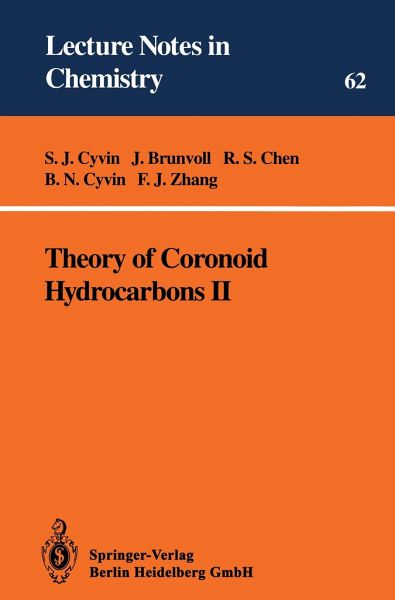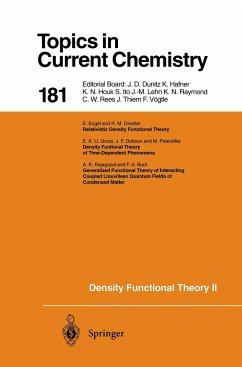
Theory of Coronoid Hydrocarbons II

PAYBACK Punkte
20 °P sammeln!
The present monograph is a continuation of Cyvin SJ, Brunvoll J and Cyvin (1991c), a reference to be found in Bibliography. Naturally, the previous volume is cited frequently here. For the sake of brevity, it is referred to as "Volume I". References to different chapters, sections or paragraphs are given like Vol. 1-1, 1-1.2 or 1-1.2.2, respectively. Also tables and equations in "Volume I" are cited; the very last equation therein, for instance, is Vol. I-{9.9). The present text spans from references to organic syntheses or attempted organic syntheses - - to stringent mathematical theorems pro...
The present monograph is a continuation of Cyvin SJ, Brunvoll J and Cyvin (1991c), a reference to be found in Bibliography. Naturally, the previous volume is cited frequently here. For the sake of brevity, it is referred to as "Volume I". References to different chapters, sections or paragraphs are given like Vol. 1-1, 1-1.2 or 1-1.2.2, respectively. Also tables and equations in "Volume I" are cited; the very last equation therein, for instance, is Vol. I-{9.9). The present text spans from references to organic syntheses or attempted organic syntheses - - to stringent mathematical theorems proved by graph-theoretical methods. Enumerations of coronoid systems is a substantial part of the work. Algebraic methods involving combinatorics and generating functions are employed on one hand, and computer programming on the other. The whole book is supposed to demonstrate a piece of mathematical chemistry, which can be characterized as lying on the "interfaces between mathematics, chemistry and computer science", a formulation used for the MATH/CHEM/COMP Conferences; d. Cyvin SJ, Brunvoll and Cyvin (1989d) in Bibliography. Financial support to BNC from the Norwegian Council for Science and the Humanities is gratefully acknowledged.












